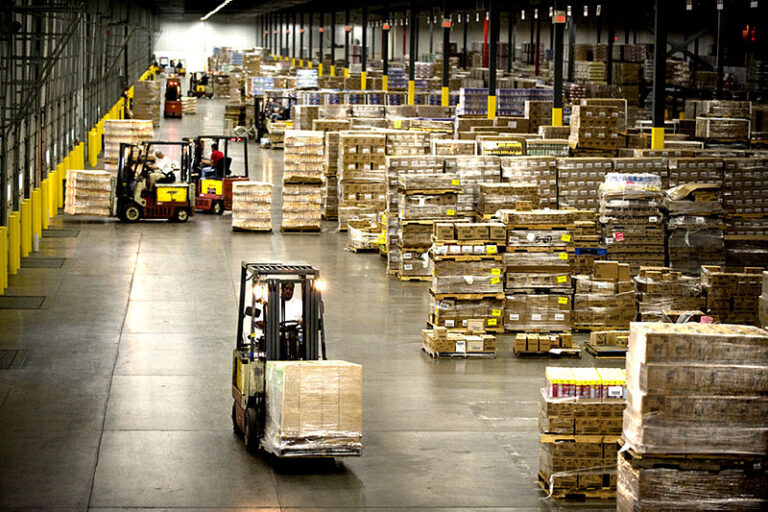Influx of South Americans Drives Miami’s Reinvention
NYT
By Lizette Alvarez
MIAMI — As the World Cup played out over the past month, yellow-clad Colombians packed the Kukaramakara nightclub downtown, Aguila beers in hand, shouting, “Colombia, Colombia!” Outside, Brazilians in car caravans blasted samba music. Argentines, some in blue-and-white striped jerseys, jammed into nearby steakhouses and empanada joints. Around town, children filed into Sunday Mass, their jerseys ablaze with their futbol heroes from across Latin America.
It was less a commentary on soccer than a tableau vivant of the new Miami, which has gone from a place defined by Cuban-Americans to one increasingly turbocharged by a surge of well-educated, well-off South Americans in the last decade. Their growing numbers and influence, both as immigrants and as visitors, have transformed Miami’s once recession-dampened downtown, enriched its culture and magnified its allure for businesses around the world as a crossroads of the Spanish-speaking world.
“It’s now the indisputable capital of Latin America,” said Marcelo Claure, a Bolivian millionaire who founded Brightstar, a global wireless distribution company based here. “The Latin economic boom in the last 10 years has led to the creation of a huge middle class in countries like Brazil, Peru and Colombia, and they look at Miami as the aspirational place to be.” The transformation, the latest chapter in the city’s decades-long evolution, is especially apparent amid the building cranes, street life and nightclubs downtown. But it is seen across Miami-Dade County, where highly educated South American immigrants and second-home owners have increasingly put down roots and played a major role in jump-starting a region that not long ago was ravaged by recession.

Their relative wealth has allowed them to ramp up businesses like import-export companies and banks, and to open restaurants that dish out arepas from Venezuela, coxinhas from Brazil and alfajores from Argentina. Partly as a result of that influx, the Miami-Fort Lauderdale region eclipsed Los Angeles in 2012 as the major metropolitan area with the largest share — 45 percent — of immigrant business owners, according to a report by the Fiscal Policy Institute, a research group.
The South American presence has also reshaped politics and radio here. More moderate than traditional Cuban-Americans, South Americans have nudged local politics toward the center. Radio stations no longer cater exclusively to Cuban audiences; they feature more news about Latin America and less anti-Castro fulminating.
Last week, Charlie Crist, who is running for governor as a Democrat, named a Colombian-American woman from Miami, Annette Taddeo-Goldstein, as his running mate.
Colombians, who first began to settle here in the 1980s, are the largest group of South Americans. They now make up nearly 5 percent of Miami-Dade’s population. They are joined by Argentines, Peruvians and a growing number of Venezuelans. Brazilians, relative newcomers to Miami’s Hispanic hodgepodge, are now a distinct presence as well. The Venezuelan population jumped 117 percent over 10 years, a number that does not capture the surge in recent arrivals. Over half of Miami’s residents are foreign born, and 63 percent speak Spanish at home.
The influx is expanding the borders of immigrant neighborhoods in places like West Kendall, the Hammocks and Doral. Their numbers are growing across the county line into Broward, where one city, Weston, has gained so many Venezuelans that it is jokingly called Westonzuela.
Jorge Pérez, the wealthy real estate developer for whom the the new Pérez Art Museum Miami is named, said the latest surge of South Americans was turning the city into a year-round destination and luring more entrepreneurs and international businesses. Latin American banks have proliferated as they follow their customers here.
Most noticeably, they are snapping up real estate in Miami, Miami Beach and Key Biscayne, a wealthy island two bridges away from Miami. Real estate developers credit South Americans for spurring the current housing boom.
“South Americans are the game changers — they are the ones that allowed the housing market to bounce back,” Mr. Pérez said.
Cubans still dominate Miami, making up just over half the number of Hispanics and a third of the total population, and Central Americans have flocked here for decades. But in an area where Hispanics have gone from 23 percent of the population in 1970 to 65 percent now, what is most striking is the deepening influence of South Americans.
Many came here to flee a political crisis, as the Venezuelans did after the presidential election of Hugo Chávez in 1998 and then his protégé, Nicolás Maduro, or to escape turbulent economies, as the Argentines and Colombians did more than a decade ago.
But the latest wave of South Americans adds a new twist. It includes many nonimmigrants — investors on the lookout for businesses and properties, including second homes in Miami and Miami Beach. For them, Miami is an increasingly alluring place to safely keep money and stay for extended periods.

Spanish, which has long been the common language in much of Miami, now dominates even broader sections of the city. In stores, banks, gyms and even boardrooms in much of Miami, Spanish is the default language.
“You can come here as a businessman, a professional, and make five phone calls, all in Spanish, to set up the infrastructure for your business,” said Guillermo J. Grenier, a sociology professor at Florida International University.
The effect on real estate is especially visible in the Brickell area, Miami’s international banking center, and in once-bedraggled parts of downtown. The South American infatuation with urban living has led to the explosion of lavish new condominium towers, with more to come. There is even rooftop soccer, like the kind offered in South America. Last year, David Beckham and Mr. Claure announced that they would bring a Major League Soccer team to Miami, though they are still in negotiations for a suitable stadium site.
Sit in a restaurant and you hear a range of accents — the lilt of Argentine patter, the clarity of Colombian Spanish, the liveliness of Venezuelans and the speedy rat-a-tat of Cubans. Brazilians have sprinkled Portuguese into the mix.
The flurry of condo construction now rivals the one before the 2008 crash, raising the specter for some housing analysts of another risky housing bubble.
A Miami Downtown Development Authority study found that more than 90 percent of the demand for new downtown and Brickell residential units came from foreign buyers; 65 percent were from South America.
“Status is having a condo in Miami,” said Juan C. Zapata, the first Colombian to serve as a Miami-Dade County commissioner and, before then, in the State Legislature.
The suburbs, too, continue to swell as more South Americans move into areas anchored by people from their countries. Doral, a middle-class city near the airport, is now a panoply of South Americans, most of them Venezuelans. Eighty percent of Doral is Hispanic, and in 2012, a Venezuelan, Luigi Boria, was elected mayor.
“Every year, we get more and more Venezuelans,” said Lorenzo Di Stefano, the owner of El Arepazo 2, a Venezuelan restaurant there. This year, with the economy worsening in Venezuela, Mr. Di Stefano said he expected another large wave.
But, Mr. Crist’s running mate and Mr. Boria aside, the South American influx has not translated into widespread electoral success. South Americans lag far behind Cuban-Americans in political power, in part because their citizenship rate is lower. Many do not vote or run for office, a reality that Mr. Zapata said must change.
“What you see in Miami is a change economically; it’s much more diverse than it used to be,” Mr. Zapata said. “But the Cubans grew economically, and turned it into political power.”
That transformation, Mr. Zapata said, will be Miami’s next chapter.
Because of an editing error, an article on Sunday about the effect an influx of South Americans is having on the reinvention of Miami misstated the relationship of the wealthy real estate developer Jorge Pérez to the new Pérez Art Museum Miami. The museum was named for Mr. Pérez; he is not its founder. The error was repeated in an accompanying picture caption.
Back to Blog


